Take A Walk Through Oscar History! As we gear up for the awards season, we thought it’d be a great chance to revisit all the “Best Picture” Academy Award winners ever, dating back to the time when the Academy debuted the award ceremony in 1929!
The Academy Award for Best Picture is one of the Academy Awards presented annually by the Academy of Motion Picture Arts and Sciences. This award goes to the producers of the film and is the only category in which every member of the Academy is eligible to submit a nomination and vote on the final ballot. Nonetheless, Best Picture Award, which is the final award of the night, is also considered the most prestigious honor of the ceremony.
So without further ado, let’s roll out the red carpet and brush up on your best pretentious hot takes, it’s time that we talk about the Oscars. All of them.
1928/1929 – Wings
Directed by William A. Wellman, “Wings” stands as a landmark in cinematic history as the very first film to win the Best Picture Oscar. Released during the silent film era, the movie is a powerful war drama set against the backdrop of World War I. It follows the intertwining destinies of two young men, played by Charles “Buddy” Rogers and Richard Arlen, who enlist in the Air Service. “Wings” is renowned for its groundbreaking aerial combat sequences, utilizing realistic flight footage and special effects that were groundbreaking for its time. The film skillfully captures the emotional toll of war, exploring themes of camaraderie, sacrifice, and the impact of conflict on personal relationships. The silent storytelling is complemented by a poignant musical score, and Clara Bow’s performance adds a touch of romance to the narrative. “Wings” remains a cinematic achievement, not only for its technical innovations but also for its ability to evoke powerful emotions and convey the human experiences of those who served in World War I.
1929/1930 – The Broadway Melody
Directed by Harry Beaumont, “The Broadway Melody” is a pivotal film in the history of cinema, marking the first sound film to win the Best Picture Oscar. As Hollywood transitioned from silent films to the era of talkies, this musical romantic drama played a significant role in shaping the future of filmmaking. The story revolves around the Mahoney sisters, played by Bessie Love and Anita Page, who travel to New York City with dreams of making it big on Broadway. The film incorporates early musical numbers, dance routines, and synchronized sound, showcasing the possibilities of the newly emerging technology. “The Broadway Melody” captures the glamour and challenges of show business while exploring themes of rivalry and love. Its success not only reflected the public’s enthusiasm for musicals but also highlighted the industry’s ability to adapt to technological advancements.
1930/1931 – All Quiet on the Western Front
“All Quiet on the Western Front was the first major anti-war film in America, and the likes of ‘Saving Private Ryan’ and ‘Dunkirk’ have borrowed the film’s ideological integrity in displaying the ill-effects of war on humans that fight on the lines. Both Spielberg and Nolan have lauded director Lewis Milestone for creating a hellish environment of confusion that plagues every soldier, demolishing the nobility and honor associated with war, and splashing morbidity all over the screen.” – Shariq Ansari, 10 Greatest Best Picture Oscar Winners.
1931/1932 – Cimarron
Directed by Wesley Ruggles, “Cimarron” is an epic Western drama that brings Edna Ferber’s novel to life on the big screen. Set against the backdrop of the Oklahoma land rush during the late 19th century, the film follows the lives of Yancey and Sabra Cravat, played by Richard Dix and Irene Dunne, as they navigate the challenges of settlement and societal changes in the American West. “Cimarron” is known for its grand scale, sweeping cinematography, and ambitious storytelling. It explores themes of ambition, resilience, and the clash between progress and tradition. The film’s portrayal of racial tensions and the evolving landscape of the American frontier earned it critical acclaim. “Cimarron” reflects the spirit of the early Western genre while delving into the personal struggles and triumphs of its characters. Its success at the Oscars solidified its place as a cinematic classic.
1932/1933 – Grand Hotel
“Decadence, deceit, and drama are at every turn of this magnificent ensemble film from MGM, the first of its kind attracting such star power. Greta Garbo, John Barrymore, Lionel Barrymore, Joan Crawford, and Wallace Beery among others played complicated characters whose lives intersect at this luxurious hotel in Berlin. The film has marked the feat of still being the only film to win Best Picture and not be nominated for any other Academy Award. In addition to the extraordinary acting, the art and production design capture Art Deco at its finest. The black and white cinematography also add to the glamour yet crumbling fragility of some of the characters’ lives in this setting. With all of this in mind, the legacy of “Grand Hotel” will continue as the original hallmark of ensemble directing and filmmaking.” – Charlene Winsor.
1933/1934 – Cavalcade
Directed by Frank Lloyd, “Cavalcade” is a historical drama that spans several decades of British history, exploring the lives of the Marryot family. Adapted from Noël Coward’s play, the film is a reflection on the passage of time and its impact on individuals and society. “Cavalcade” unfolds against the backdrop of significant historical events, including the Boer War, World War I, and the sinking of the Titanic. The film’s narrative is structured as a series of vignettes, providing glimpses into the evolving dynamics of the Marryot family and their interactions with the changing world around them. The film captures the grand sweep of history while emphasizing the personal experiences and emotions of its characters. “Cavalcade” received praise for its ambitious storytelling, visual spectacle, and emotional resonance. The exploration of societal shifts and the human cost of historical events contributed to its recognition with the Best Picture Oscar, making it a poignant representation of the times in which it was made.
1935 – It Happened One Night
“Hailed as the first screwball comedy, this road movie about the two opposites falling in love seemed doomed from the start. Multiple actors passed on the script before Clark Gable and Claudette Colbert reluctantly agreed to participate in the film. However, audiences quickly saw the charm comedy, and the chemistry between the two leads with the film becoming a sleeper hit. It surprisingly won the top 5 Academy Awards that evening – Best Director (Frank Capra), Best Actor, Best Actress, Best Adapted Screenplay (Robert Riskin), and of course, the Best Picture. Only two other films have since won this quintet of awards – “One Flew Over The Cuckoo’s Nest” (1975) and “The Silence of the Lambs” (1991). The awards and the admiration for “It Happened One Night” will help ensure that generations continue to see and love this film.” – Charlene Winsor.
1936 – Mutiny on the Bounty
“Mutiny on the Bounty,” directed by Frank Lloyd, is a gripping maritime drama based on the real-life mutiny that occurred aboard the HMS Bounty in 1789. Charles Laughton delivers a standout performance as the tyrannical Captain William Bligh, whose oppressive leadership pushes the crew, led by Fletcher Christian (Clark Gable), to rebellion. The film masterfully captures the harsh conditions of life at sea, emphasizing the crew’s struggle against injustice. “Mutiny on the Bounty” stands as a cinematic classic, not only for its engaging storytelling but also for its groundbreaking use of location shooting and realistic seafaring scenes. The film’s success at the Oscars, winning the Best Picture award, solidifies its place in the pantheon of great adventure films.
1937 – The Great Ziegfeld
“The Great Ziegfeld,” directed by Robert Z. Leonard, is a lavish musical biography that chronicles the life of Broadway showman Florenz Ziegfeld. Starring William Powell as Ziegfeld and Luise Rainer in an Oscar-winning role as his first wife, Anna Held, the film immerses audiences in the extravagant world of Ziegfeld’s theatrical productions. The film is celebrated for its opulent set designs, elaborate musical numbers, and captivating performances. One of its standout sequences is the iconic “A Pretty Girl Is Like a Melody,” a visually stunning and technically ambitious musical number. “The Great Ziegfeld” not only captures the glamour of show business but also delves into the personal and professional challenges faced by its titular character. Winning the Best Picture Oscar, the film remains a testament to the golden age of Hollywood musicals.
1938 – The Life of Emile Zola
“The Life of Emile Zola,” directed by William Dieterle, is a biographical drama that explores the life of the renowned French writer Emile Zola, played by Paul Muni. The film primarily focuses on Zola’s involvement in the Dreyfus Affair, a controversial case that exposed anti-Semitism in the French military. Muni delivers a compelling performance, capturing Zola’s passion for justice and his commitment to using the power of the written word to expose societal injustice. The film is a powerful exploration of courage, integrity, and the consequences of taking a stand against political corruption. “The Life of Emile Zola” received critical acclaim, winning three Oscars, including Best Picture, and remains a notable example of a biographical film that engages with historical and social issues.
1939 – You Can’t Take It with You
“You Can’t Take It with You,” directed by Frank Capra, is a heartwarming comedy based on the Pulitzer Prize-winning play by George S. Kaufman and Moss Hart. The film follows the eccentric Sycamore family, led by Grandpa Vanderhof (Lionel Barrymore), as they live a carefree and unconventional life. When Alice Sycamore (Jean Arthur) falls in love with Tony Kirby (James Stewart), the son of a wealthy banker, the two families with vastly different backgrounds collide in a comedic and heartwarming fashion. Capra’s film is a celebration of individuality, love, and the pursuit of happiness over material wealth. “You Can’t Take It with You” won the Best Picture Oscar and is remembered for its charming characters, humorous situations, and timeless message that resonates with audiences across generations.
1940 – Gone with the Wind
“Gone with the Wind,” directed by Victor Fleming, is an epic historical romance film based on Margaret Mitchell’s novel. Set against the backdrop of the American Civil War and the Reconstruction era, the film follows the tumultuous life of Scarlett O’Hara (Vivien Leigh) and her complicated relationship with Rhett Butler (Clark Gable). “Gone with the Wind” is renowned for its sweeping cinematography, iconic performances, and memorable scenes, including the famous line, “Frankly, my dear, I don’t give a damn.” The film explores themes of love, loss, and societal upheaval, capturing the grandeur of the Southern plantation lifestyle and the challenges faced by its characters. Winning multiple Oscars, including Best Picture, “Gone with the Wind” remains a cultural phenomenon and a classic in the history of cinema.
1941 – Rebecca
“‘Rebecca’ was Alfred Hitchcock’s first venture into Hollywood, and is the only film directed by the Master of Suspense to have won the Best Picture Oscar. Adapted from Daphne du Maurier’s novel of the same name, Rebecca’s defining quality was its gothic ambience, and Hitchcock masterfully translates it on the big screen, with Rebecca’s invisible spectral presence chained to our minds. Hitchcock’s actualization of suspense as a paranormal entity, was first successfully developed here, and he started exploring obsession and frivolousness in rich aristocratic households.” – Shariq Ansari, 10 Criminally Underrated Best Picture Oscar Winners.
1942 – How Green Was My Valley
Directed by John Ford, “How Green Was My Valley” is a poignant drama that unfolds through the eyes of Huw Morgan, played by Roddy McDowall, as he reflects on his childhood in a Welsh mining community. The film, based on Richard Llewellyn’s novel, is a powerful exploration of family, community, and the impact of industrialization on traditional ways of life. Narrated by an older Huw, the story weaves together themes of love, resilience, and the passage of time. Ford’s masterful direction captures the beauty of the Welsh landscape and the challenges faced by the working-class community. The film’s emotional depth and evocative storytelling resonated with audiences and critics alike, leading to its success at the Oscars, where it won Best Picture and four other Academy Awards. “How Green Was My Valley” remains a timeless cinematic achievement, celebrated for its moving narrative, rich characters, and its ability to capture the essence of a bygone era.
1943 – Mrs. Miniver
Directed by William Wyler, “Mrs. Miniver” is a wartime drama that portrays the resilience and strength of an English family during World War II. Starring Greer Garson as Kay Miniver and Walter Pidgeon as Clem Miniver, the film depicts the impact of the war on the Miniver family and the broader British community. The story unfolds with a focus on the home front, illustrating the sacrifices made by civilians as they confront the challenges of war. “Mrs. Miniver” is notable for its emotional depth, realistic portrayal of wartime life, and the powerful performances of its cast. The film’s impact was profound, serving as a source of inspiration and morale during a critical period in history. It garnered acclaim at the Oscars, winning six Academy Awards, including Best Picture. “Mrs. Miniver” stands as a testament to the strength of the human spirit in the face of adversity, making it a classic wartime drama that continues to resonate with audiences for its timeless themes of courage and resilience.
1944 – Casablanca
“Arguably the most romantic movie of all time, Casablanca is a timeless classic that captured much of our feelings of uncertainty during World War II and concern about the Nazi regime, even though it was made during the earlier days of American involvement. Victor Laszlo’s comment to Major Strasser that “even Nazis can’t kill that fast,” makes perfect sense in the 21st century, but for its time, was an amazing observation. It’s no wonder that Americans so readily got behind the war effort.” – John Menninger, 10 Most Iconic American Movies.
1945 – Going My Way
Directed by Leo McCarey, “Going My Way” is a heartwarming musical comedy-drama that stars Bing Crosby as Father Chuck O’Malley, a young and unconventional priest who is assigned to a struggling parish. The film explores Father O’Malley’s unorthodox methods of connecting with the community and addressing its challenges, both spiritual and practical. Through music and compassion, O’Malley attempts to bring joy and harmony to the lives of those he serves. Bing Crosby’s performance is a standout, and the film’s musical elements, including the Oscar-winning song “Swinging on a Star,” contribute to its charm. “Going My Way” received widespread acclaim and went on to win seven Academy Awards, including Best Picture. The film’s positive and uplifting portrayal of the clergy’s impact on a community resonated with audiences during a time when the world was recovering from the challenges of World War II.
1946 – The Lost Weekend
Directed by Billy Wilder, “The Lost Weekend” is a groundbreaking film that delves into the struggles of alcoholism. The story follows Don Birnam, played by Ray Milland, a writer battling his addiction to alcohol over the course of a harrowing weekend. The film provides a raw and unflinching portrayal of the devastating effects of alcoholism on an individual’s life, relationships, and mental well-being. Wilder’s direction, combined with Milland’s powerful performance, makes “The Lost Weekend” a compelling and emotionally charged cinematic experience. The film received critical acclaim for its innovative use of narrative structure and its willingness to tackle a subject matter that was considered taboo at the time. “The Lost Weekend” not only won the Best Picture Oscar but also earned accolades for Milland as Best Actor. It remains a significant film in the history of cinema, contributing to a broader understanding of addiction and influencing later works that explored similar themes.
1947 – The Best Years of Our Lives
“The Best Years of Our Lives won 7 Oscars (including Best Director and Best Film) and happened to be highest-grossing film since David O Selznick’s Gone with the Wind (1939). Today, the film might sound like one of those familiar melodramas, put forth to confirm the popular perception of American nationalism. But such assumptions would only be too wrong. William Wyler had worked hard to strip the essentials of the narrative to its basic, making its themes and characters universal in nature. In his review, the late Roger Ebert praised the film in this manner: “As long as we have wars and returning veterans, some of them wounded, ‘The Best Years of Our Lives’ will not be dated.”” – Arun Kumar, The Best Years of Our Lives (1946): A Poignant Tale About War Veterans Returning Back To Civil Life.
1948 – Gentleman’s Agreement
Directed by Elia Kazan, “Gentleman’s Agreement” is a thought-provoking drama that addresses anti-Semitism in post-World War II America. Starring Gregory Peck as journalist Philip Schuyler Green, the film tells the story of Green’s decision to pose as a Jewish man to experience firsthand the discrimination faced by Jewish people. The narrative explores the subtle and overt forms of prejudice and bigotry present in society. “Gentleman’s Agreement” received widespread acclaim for its bold and timely exploration of a sensitive social issue. The film’s commitment to addressing prejudice head-on and its strong performances, particularly by Peck, contributed to its success at the Oscars, where it won three Academy Awards, including Best Picture.
1949 – Hamlet
Directed by and starring Laurence Olivier, “Hamlet” is a cinematic adaptation of William Shakespeare’s timeless tragedy. Olivier’s film is widely regarded as a landmark in Shakespearean cinema, capturing the essence of the play’s complex characters and themes. Olivier’s portrayal of Hamlet is notable for its depth and nuance, earning him an Academy Award for Best Actor. The film’s atmospheric cinematography and Olivier’s innovative approach to adapting the classic play for the screen contribute to its enduring impact. “Hamlet” received critical acclaim and made history by becoming the first non-American film to win the Best Picture Oscar. Olivier’s achievement in bringing Shakespearean drama to a wider audience is celebrated as a significant moment in the intersection of literature and film.
1950 – All the Kings Men
Directed by Robert Rossen, “All the King’s Men” is a political drama based on Robert Penn Warren’s Pulitzer Prize-winning novel. The film explores the rise and fall of Willie Stark, played by Broderick Crawford, a charismatic and power-hungry politician in the American South. The narrative delves into themes of corruption, morality, and the consequences of unchecked ambition. Crawford’s powerful performance as Stark earned him the Best Actor Oscar, and the film received widespread acclaim for its sharp commentary on political machinations. “All the King’s Men” is praised for its compelling storytelling and the exploration of the complexities of power. The film’s success at the Oscars, winning three awards including Best Picture, solidifies its place as a compelling examination of the moral compromises inherent in the pursuit of political success.
1951 – All About Eve
“Bette Davis is known for her iconic Hollywood status, and despite what All About Eve suggests, she manages to steal the show as headstrong theatre actress, Margo. The titular role is played by Anne Baxter, who embodies an intriguing balance of victimhood and subtle villainy. All About Eve follows Eve’s rise to stardom through manipulation and lies. Eve’s love for the theatre is defined through her tragic damsel facade, almost gasping for breath whenever she speaks and using her supposed innocence to draw others in. Contrarily, Margo is brash and thick-skinned, offering comic relief with her cutting yet witty remarks. However, this tough exterior only masks her valid insecurities and fears of being replaced by a younger and fresher model – something she recognizes in Eve. Besides having layered female characters, the film includes elements of suspense as suspicions are confirmed and it is slowly revealed how far people will go to become their idols.” – Lauren Bedford.
1952 – An American in Paris
“An American in Paris” (1951), directed by Vincente Minnelli, is a dazzling cinematic gem that unfolds the enchanting narrative of love, art, and music amidst the romantic allure of Paris. Starring Gene Kelly as Jerry Mulligan, a struggling American artist, and Leslie Caron as Lise Bouvier, a beguiling French woman, the film seamlessly integrates storytelling with visually stunning musical numbers. The standout ballet sequence, choreographed by Kelly, set to George Gershwin’s orchestral composition, elevates the film’s emotional depth and artistic resonance. “An American in Paris” captivates with its innovative use of Technicolor, charismatic performances, and a delightful musical score. The film, winning six Academy Awards, including Best Picture, is a timeless exemplar of the Golden Age of Hollywood musicals, celebrated for its enduring charm and artistic achievements. Its dreamlike sequences, evocative romance, and the magical backdrop of Paris continue to make “An American in Paris” an adored and enduring cinematic masterpiece that has left an indelible mark on the history of musical films.
1953 – The Greatest Show on Earth
“Director Cecil B. DeMille’s films have always been of epic proportions, and “The Greatest Show on Earth” is no exception. The film is set in Ringling Bros. and Barnum & Bailey Circus, with the 1951 troupe, crew, animals, and equipment captured on screen. This massive project has elements of documentary and drama amongst its ensemble cast. Most impressive is James Stewart as Buttons the Clown, a clown who never removes his makeup. This film won Best Story (now a defunct category) at the Oscars and surprisingly won the Best Picture, some say on the basis of DeMille having directed the film. It has received very mixed reviews over the years, touted as one of the worst Best Picture winners in history. Nevertheless, I feel that it is a over-the-top Technicolor spectacle that deserves to be seen.” – Charlene Winsor.
1954 – From Here to Eternity
“From Here to Eternity” (1953), directed by Fred Zinnemann, is a cinematic tour de force set against the backdrop of pre-World War II Hawaii. Adapted from James Jones’s novel, the film delves into the lives of U.S. Army soldiers stationed at Schofield Barracks as they navigate love, duty, and the impending war. Starring Burt Lancaster, Montgomery Clift, and Deborah Kerr, the film features unforgettable performances that bring depth to its characters. The iconic beach scene, featuring Lancaster and Kerr, has become one of cinema’s most enduring images. The film’s exploration of military life, the challenges of relationships, and the looming threat of war earned it critical acclaim. The ensemble cast, including Frank Sinatra in an Oscar-winning role, contributes to the film’s powerful narrative. “From Here to Eternity” received 13 Academy Award nominations and won eight, including Best Picture. Its impact on the portrayal of the military in cinema, coupled with its bold storytelling and stellar performances, solidifies its status as a classic that continues to resonate with audiences for its timeless exploration of human emotions and the enduring impact of war.
1955 – On the Waterfront
“Elia Kazan was one of the most influential figures in the transition from the melodramatic acting that was typical of white bourgeoisie characters to the methodical acting that was necessary to represent the socially underprivileged. Kazan’s characters were devoid of the pitiful representation of the poor, which Hollywood fetishised. Instead, his characters were resolute and possessed characteristics that were grayer than the look of his films.” – Shariq Ansari, 10 Criminally Underrated Best Picture Oscar Winners.
1956 – Marty
Directed by Delbert Mann, “Marty” is a poignant and character-driven drama that captures the ordinary struggles of an unassuming, middle-aged Bronx butcher named Marty Piletti, portrayed by Ernest Borgnine. The film, based on Paddy Chayefsky’s teleplay, unfolds over a brief but transformative period in Marty’s life as he navigates societal pressures to conform and find love. The narrative is a tender exploration of loneliness, self-discovery, and the complexities of human connection. Borgnine’s heartfelt and Academy Award-winning performance adds depth to the character, making Marty’s journey profoundly relatable. “Marty” received widespread critical acclaim, winning four Oscars, including Best Picture, and it remains a timeless classic celebrated for its authenticity and the universal themes it addresses.
1957 – Around the World in 80 Days
Directed by Michael Anderson, “Around the World in 80 Days” is a lavish and epic adventure film that brings Jules Verne’s classic novel to life with a star-studded ensemble cast led by David Niven as Phileas Fogg. The story follows Fogg and his loyal French valet, Passepartout, played by Cantinflas, as they embark on a daring journey to circumnavigate the globe in 80 days. The film is renowned for its grand scale, exotic locations, and impressive production design, capturing the spirit of adventure and exploration. “Around the World in 80 Days” was a cinematic spectacle of its time, winning five Academy Awards, including Best Picture, and it remains an enduring classic known for its entertaining and escapist qualities, as well as its ambitious approach to bringing Verne’s imaginative tale to the big screen.
1958 – The Bridge on the River Kwai
“Lean’s goal was to create something riveting, something that could encapsulate the sheer amount of work and lives involved in constructing a bridge, a task which might seem very commonplace, but with the dynamics of WW2 and POWs included, it was a task that comprised of polygonal relationships. Different people with different agendas, coming together to create a singular structure, whose jagged solid beams were reflective of the POWs’ repression and whose collapse represented their apparently hardened selves crumbling to the actuality of defeat.” – Shariq Ansari, 10 Criminally Underrated Best Picture Oscar Winners.
1959 – Gigi
Directed by Vincente Minnelli, “Gigi” invites audiences into the enchanting world of Belle Époque Paris, weaving a tale of love, societal expectations, and personal growth. Based on Colette’s novella, the film follows Leslie Caron as the charming Gigi, navigating the intricacies of her unconventional upbringing and a blossoming romance with Louis Jourdan’s Gaston Lachaille. With elegance and sophistication, the narrative unfolds against a backdrop of sumptuous production design and a delightful score by Alan Jay Lerner and Frederick Loewe, featuring memorable tunes like “Thank Heaven for Little Girls” and “I Remember It Well.” A musical sensation, “Gigi” earned nine Academy Awards, including Best Picture, celebrated for its romanticism, exuberant musical numbers, and meticulous attention to detail that vividly brings Belle Époque Paris to life.
1960 – Ben-Hur
Directed by William Wyler, “Ben-Hur” is a monumental epic that immerses audiences in the ancient world with grand scale, breathtaking set pieces, and compelling narrative. Charlton Heston delivers a commanding performance as Judah Ben-Hur, experiencing betrayal, slavery, and seeking redemption and forgiveness. The film’s iconic chariot race sequence, choreographed with thrilling precision, remains a cinematic masterpiece, showcasing filmmaking prowess. Praise extends beyond technical achievements, as “Ben-Hur” explores profound human themes within historical spectacle, delving into revenge, compassion, and the transformative power of forgiveness. Winning a historic 11 Academy Awards, including Best Picture, “Ben-Hur” endures not only for its visual spectacle but also for its timeless portrayal of human resilience and the enduring quest for redemption in the face of adversity. With sweeping scope and powerful storytelling, “Ben-Hur” stands as an indelible classic in the annals of cinema.
1961 – The Apartment
1962 – West Side Story
Directed by Jerome Robbins and Robert Wise, “West Side Story” is a landmark musical that reimagines William Shakespeare’s “Romeo and Juliet” in the vibrant backdrop of 1950s New York City. With a screenplay by Ernest Lehman and iconic music by Leonard Bernstein, the film captures the fierce and tragic love story between Tony, played by Richard Beymer, and Maria, played by Natalie Wood, amidst the rival street gangs—the Jets and the Sharks. The electrifying choreography, co-directed by Jerome Robbins and brought to life by a dynamic ensemble cast, including Rita Moreno, creates a visually stunning and emotionally charged cinematic experience. “West Side Story” not only addresses issues of love and prejudice but also becomes a powerful social commentary on urban unrest. The film garnered critical acclaim and received 10 Academy Awards, including Best Picture. Its enduring legacy is marked by its cultural impact, timeless musical score, and the groundbreaking fusion of dance and storytelling, making “West Side Story” an integral part of cinematic history that continues to resonate with audiences worldwide.
1963 – Lawrence of Arabia
“David Lean’s masterpiece, ‘Lawrence of Arabia’ is considered by many to be the greatest English language epic. It’s impossible to find a film prior to Lawrence of Arabia that uses the camera as ambitiously and manages to exude a cinematic scale that would be revered for aeons, maybe only Abel Gance’s ‘Napoleon’ is on par.” – Shariq Ansari, 10 Greatest Best Picture Oscar Winners.
1964 – Tom Jones
Directed by Tony Richardson, “Tom Jones” is a lively and exuberant cinematic adaptation of Henry Fielding’s classic novel, “The History of Tom Jones, a Foundling.” The film, set in 18th-century England, follows the misadventures and romantic escapades of the charming and roguish Tom Jones, portrayed by Albert Finney. With a playful and irreverent narrative style, the film captures the spirited essence of the source material, infusing it with humor, wit, and a touch of satire. Albert Finney’s charismatic performance as the titular character adds depth to the rollicking tale, and the film’s lively energy is complemented by a memorable musical score. “Tom Jones” received widespread acclaim for its innovative approach to storytelling, including breaking the fourth wall and employing unconventional narrative techniques. The film’s success at the Academy Awards, where it won four Oscars, including Best Picture, solidifies its place as a unique and spirited cinematic achievement. “Tom Jones” stands out as a delightful and comedic romp through 18th-century England, celebrated for its wit, style, and the infectious charm of its central character.
1965 – My Fair Lady
“Initially, it may be presumed that My Fair Lady is yet another rags to riches tale. However, with Audrey Hepburn as the lead, it promises something much more special. Throughout, we are treated to extravagant set and costume design, with iconic lines and impressive musical numbers. Alongside the eye-catching visuals, Audrey is unsurprisingly captivating as Eliza, demonstrating down-to-earth humor as well as effortless elegance. Professor Higgins, played by Rex Harrison, bounces off Eliza’s more innocent nature perfectly with his amusingly sarcastic and scathing comments. Although, behind the notable cinematography and dialogue, are themes of classism and social mobility. Eliza represents those attempting to escape their restrictive working class roots, versus her father who is unable and unwilling to assimilate to a largely unaccepting higher society. As Eliza dissociates from her old self by transforming externally, her inner turmoil emerges as she unintentionally becomes an imposter in both her new world – and the world she left behind.” – Lauren Bedford.
1966 – The Sound of Music
“Who doesn’t remember Julie Andrews singing, “The hills are alive…with the sound of music!” In the gorgeous alpines of Austria with her arms wide open, as if from another world altogether? There was also the magnetic Captain Von Trapp, played by Christopher Plummer with unforgettable charm. Even so, Robert Wise’s The Sound of Music is one of those rare musicals to have won the Academy Award for Best Picture. During its initial release it had even surpassed Gone With the Wind to emerge as the highest-grossing film of all time. The Sound of Music is also one of those feel-good, too-good-to-be-true premises that predictably provides a satisfying denouement. Here it is a planned escape from the hands of Nazis. Julie Andrews’ effortless performance captures the soul of the film even though the banality of the larger operation that the narrative devices is not hard to locate.” – Santanu Das.
1967 – A Man for All Seasons
Directed by Fred Zinnemann, “A Man for All Seasons” is a poignant historical drama that delves into the life of Sir Thomas More during a tumultuous period in English history. Paul Scofield delivers a powerful performance as More, a man of unwavering principles, navigating the treacherous political landscape of King Henry VIII’s reign. The film adeptly explores the clash between personal conscience and political power as More faces moral dilemmas and ultimately pays the ultimate price for his steadfast beliefs. The script, adapted from Robert Bolt’s play, captures the intellectual and emotional depth of its characters, earning the film six Academy Awards, including Best Picture. “A Man for All Seasons” stands as a timeless exploration of ethics and integrity, inviting audiences to reflect on the enduring struggle between individual convictions and the demands of authority.
1968 – In the Heat of the Night
Directed by Norman Jewison, “In the Heat of the Night” is a groundbreaking crime drama that confronts racial tensions and prejudices in a small Southern town. Sidney Poitier delivers a groundbreaking performance as Detective Virgil Tibbs, who becomes an unexpected force for justice in the face of systemic racism. Teaming up with Rod Steiger’s Police Chief Bill Gillespie, the film masterfully weaves a suspenseful narrative while addressing complex social issues. The chemistry between Poitier and Steiger adds layers to the story, emphasizing the evolving relationship between the two characters. “In the Heat of the Night” not only serves as a compelling detective story but also as a profound exploration of racial inequality and the quest for justice. Its impact is evident in the five Academy Awards it garnered, including Best Picture, recognizing its role in challenging societal norms and contributing to a broader dialogue on civil rights during a pivotal era in American history.
1969 – Oliver!
Directed by Carol Reed, “Oliver!” brings Charles Dickens’s classic tale “Oliver Twist” to life with vibrant musicality and visual splendor. Mark Lester portrays the innocent orphan Oliver, navigating the harsh realities of Victorian London. The film introduces audiences to memorable characters like Fagin, played with captivating energy by Ron Moody, and the Artful Dodger, offering a rich tapestry of Dickensian charm. Lionel Bart’s enchanting musical compositions, including standout numbers like “Consider Yourself” and “As Long as He Needs Me,” enhance the film’s lively atmosphere. “Oliver!” not only captures the essence of Dickens’s storytelling but also infuses it with cinematic spectacle. The film’s success, winning six Academy Awards, including Best Picture, reflects its universal appeal as a family-friendly musical that remains a timeless and joyful adaptation of a literary classic, transporting audiences to a world of adventure, camaraderie, and the enduring spirit of hope.
1970 – Midnight Cowboy
“Midnight Cowboy was released in 1969 the same year as Dennis Hopper’s Easy Rider. The American New Wave was in its infancy. Midnight Cowboy won three Academy awards for Best Picture, Best Director and Best Adapted Screenplay. It remains the only X rated film to win best picture. The film has its roots in classic American literature, with its prevalent theme of strong and close male relationships. There is a correlation to be witnessed between Midnight Cowboy and John Steinbeck’s 1937 novel Of Mice and Men.” – Tom Crawley, Midnight Cowboy (1969): Castaways On Streets.
1971 – Patton
“General Patton’s opening monologue, albeit with heavily filtered down language, against the gigantic US national flag is cinematic legacy. Patton’s address to the audience is fierce and motivational, potent enough to put the dead rocks into action. It sets the tone for his journey ahead – one of glory, inescapably intertwined with spite and humiliation. Writers Francis Ford Coppola and Edmond North without actively engaging a singular character study deflect Patton’s menacing personality and rare courage through his actions in the battlefield. Rarely does ‘Patton’ delve into the protagonist’s psyche, instead choosing to gauge how those around the General viewed him as a person and in his official capacity. The sprawling cinematography and abundant wide shots highlight the epic production scale and subjugate the viewer into the shoes of soldiers on war-torn grounds. George C. Scott’s haunting proximity to the real Patton is unwavering. There is not a minute during significant screen time that you would not admire and loath him as the most decorated army man in US military history. His spectacular performance sets a bar so high, it is unlikely to be ever attempted or repeated.” – Arnav Srivastav
1972 – The French Connection
“The early 70s continued the bleak realist style that had developed in American cinema during the late 60s, as a result of the Vietnam War. Friedkin realized how neglected the American underbelly was, even though America was lying flat on its back. Enter ‘The French Connection’ and the American noir is turned into an exploration of time and the people bound to circumstances given birth by that period.” – Shariq Ansari, 10 Criminally Underrated Best Picture Oscar Winners.
1973 – The Godfather
“An unforgettable saga on organized crime, The Godfather is the prime representation of the gangster genre, which manifests “a new mythology of crime” (Cawelti 326). The 1970’s symbol of the ‘gangster’ proved to be a catalyst in the alteration of the notion of the Italian-American male – a figure, according to Fred L.Gardaphe, who embodies traits otherwise stifled by dominant culture. This transformation helps to proffer an insight into “the past, present, and future of U.S culture, providing a road map for the directions taken by variants of masculinity in America””. – Debopriyaa Dutta, The Godfather Paradox: Diasporic Dialectics, Gender Trouble and Issues of Identity.
1974 – The Sting
Directed by George Roy Hill, “The Sting” is a masterfully crafted and stylish caper film that transports audiences to the world of 1930s Chicago, where two con artists, played by Paul Newman and Robert Redford, orchestrate an elaborate scheme to take down a corrupt and dangerous gangster. The film is characterized by its clever plot twists, witty dialogue, and a memorable ragtime soundtrack composed by Scott Joplin. Paul Newman and Robert Redford’s on-screen chemistry is palpable, adding a layer of charm to their characters’ intricate maneuvers. “The Sting” not only pays homage to the classic era of con films but also stands out as a caper with its own unique flair. George Roy Hill’s direction, combined with David S. Ward’s Oscar-winning screenplay, creates a narrative that keeps audiences on the edge of their seats while relishing in the cleverness of the protagonists’ schemes. The film received widespread acclaim and won seven Academy Awards, including Best Picture, cementing its status as a classic in the genre and showcasing the enduring appeal of well-executed cinematic trickery and storytelling.
1975 – The Godfather Part II
“Both the Godfather films are inseparable and yet individual masterpieces, thus for the list of greatest best picture Oscar winners, it was impossible and irrational to pick only one. ‘The Godfather’ duology is arguably the most seminal story in American film-making history. Francis Ford Coppola’s mafia epic cemented an approach to American cinema that had been lost due to the Hays Code and the monopoly on artistry enforced by the production houses.” – Shariq Ansari, 10 Greatest Best Picture Oscar Winners.
1976 – One Flew Over the Cuckoo’s Nest
“Nicholson’s vivacity is a huge part of why Miloš Forman’s adaptation of Ken Kesey’s novel soars; even when the book’s psychedelic trappings are eschewed, even when the hospital’s lonely souls are filmed through a dreary, low-lit documentary texture, it remains a rousing and reinvigorating work of cinema. Today, it feels neither like a work of counter-cultural modishness or a study of outmoded psychiatric methods, but a film which affirms the undying need for individual expression within institutional confines.” – Charlie Bennett, 10 Best Jack Nicholson Movie Performances.
1977 – Rocky
Directed by John G. Avildsen, “Rocky” is a cinematic underdog story that became a cultural phenomenon and a defining moment in the sports film genre. Written by and starring Sylvester Stallone as the titular character, the film follows the journey of Rocky Balboa, a small-time boxer given the chance to fight heavyweight champion Apollo Creed, played by Carl Weathers. “Rocky” transcends its sports-centric narrative, focusing on themes of resilience, determination, and the pursuit of the American Dream. Avildsen’s direction and Stallone’s heartfelt performance contribute to the film’s emotional impact, creating a character-driven story that resonates with audiences. The iconic training montage set to Bill Conti’s “Gonna Fly Now” has become a symbol of triumph and perseverance. “Rocky” received widespread acclaim for its authenticity, capturing the grittiness of Philadelphia and the struggles of its working-class protagonist. The film’s unexpected success at the Academy Awards, winning three Oscars, including Best Picture, solidifies its place in cinematic history. “Rocky” not only launched Stallone’s career but also inspired a franchise that has endured for decades, leaving an indelible mark on popular culture and earning its place as a quintessential tale of the human spirit.
1978 – Annie Hall
“A comedian reeling on the verge of despair, a scatterbrained dreamer wanting everything from nothing and a romance of a lifetime. That’s all there is to say about Annie Hall. A movie which is so much in love with itself that it becomes infectious, so much in awe with its themes that they resonate almost equivocally. Through tightly edited screenplay and poignant direction, Woody Allen has crafted a wisdom tooth for all ages.” – Kalpit Tandon, Annie Hall (1977): A Wisdom Tooth For All Ages.
1979 – The Deer Hunter
Directed by Michael Cimino, “The Deer Hunter” stands as a haunting and immersive war drama that intricately explores the profound impact of the Vietnam War on the lives of a tight-knit group of friends hailing from a small Pennsylvania town. Anchored by powerhouse performances from Robert De Niro, Christopher Walken, and Meryl Streep, the film unfolds in three gripping acts: a pre-war wedding celebration, the harrowing experiences of the characters during the war, and the challenging aftermath upon their return home. Cimino’s meticulous direction captures not only the physical perils of combat but, more significantly, delves into the psychological toll it exacts on individuals and their relationships. Christopher Walken’s portrayal of Nick, for which he earned an Academy Award for Best Supporting Actor, is particularly poignant, reflecting the profound trauma faced by veterans. Despite historical inaccuracies and controversy, “The Deer Hunter” received widespread critical acclaim and clinched five Oscars, including Best Picture. The film’s haunting cinematography, paired with a stirring musical score, contributes to its emotional resonance, making it a landmark cinematic exploration of the complexities of war, human resilience, and the enduring struggle to find meaning and connection in the aftermath of profound loss.
1980 – Kramer vs. Kramer
“In a single monologue, Streep destroys the reservations made against her character’s initially apathetic decision, and breaks your heart by revealing the self-isolation she had to endure in order to contribute to her family. Her character speaks for the sacrifices women are expected to oblige to in marriages, and the domestication of their spirit for a conservative idea of maternity.” – Shariq Ansari, 25 Best Oscar Winning Performances (Female).
1981 – Ordinary People
“People do not always have an answer to things that happen in the world. At times, the best one can do is to suffer in silence and internalize their pain. Robert Redford’s three protagonists suffer from a similar feeling. The loss of Buck, the elder son in the family, marks the onset of a turbulent, and seemingly irredeemable, period in the lives of Calvin, Beth, and Conrad. The latter’s suicide attempt further complicates, and perils attempts by the family to go back to normalcy. Their navigation of grief and strained relationships is the main arc in the film’s thematic structure. Without much exposition and without using stylistic techniques, Redford’s deliberations are subtle, meticulous, and almost intentionally understated, to hand his sublime cast the reins. His masterful and sparing use of flashbacks, especially in scenes where Calvin and Beth sit in an airplane and when Conrad hears about Karen, has been abundantly used by modern filmmakers. Actually, much of what Redford does in his directorial debut acts as blueprint to narrative techniques today. Shades of ‘Ordinary People’ can be seen in ‘Manchester By The Sea’, ‘ Goodwill Hunting’, among many others. ‘Ordinary People’ speaks a rare cinematic language that is so often lost on films about grief and dysfunctional individuals that tend to neglect the uniqueness of emotion.” – Arnav Srivastav
1982 – Chariots of Fire
Directed by Hugh Hudson, “Chariots of Fire” is an inspiring and visually stunning drama that explores themes of athleticism, faith, and the pursuit of individual excellence. Set against the backdrop of the 1924 Summer Olympics, the film follows the true story of two British runners, Harold Abrahams (played by Ben Cross) and Eric Liddell (played by Ian Charleson), as they overcome personal and societal challenges to compete in the Games. The film’s iconic soundtrack, composed by Vangelis, adds to its emotional resonance and became synonymous with the spirit of achievement. “Chariots of Fire” received critical acclaim for its evocative cinematography, compelling performances, and the skillful integration of its characters’ personal journeys with the historical events of the time. The film won four Academy Awards, including Best Picture, and remains a timeless classic that celebrates the triumph of the human spirit and the dedication required to reach one’s goals.
1983 – Gandhi
“One of the best biopics of all time, “Gandhi” masterfully portrays one of the most important stories of 20th century – India’s struggle of independence from the British rule, spearheaded by one of the most extraordinary man of all time, Mahatma Gandhi. Playing the pacifist Indian lawyer-turned-leader, Ben Kingsley delivers one of the best performances of his lifetime in the titular role.” – Manisha Singh.
1984 – Terms of Endearment
Directed by James L. Brooks, “Terms of Endearment” is a heartfelt and poignant family drama that navigates the complexities of love, relationships, and the passage of time. The film, based on Larry McMurtry’s novel, revolves around the evolving bond between a mother and daughter, Aurora Greenway (played by Shirley MacLaine) and Emma Horton (played by Debra Winger), over three decades. The narrative skillfully weaves humor and drama, exploring the highs and lows of their lives and relationships with those around them. The film’s ensemble cast, which also includes Jack Nicholson, provides memorable performances, contributing to the emotional depth of the story. “Terms of Endearment” received widespread acclaim for its authentic portrayal of family dynamics and its ability to evoke laughter and tears in equal measure. Winning five Academy Awards, including Best Picture, the film stands as a testament to the enduring power of storytelling that captures the intricacies of human connections and the enduring bonds that define a lifetime.
1985 – Amadeus
“Although introduced as a musical, it was far beyond one. I had just heard the name of Wolfgang Amadeus Mozart, the genius whose music was no less than a revolution in itself and perhaps I had heard one or two of his most famous symphonies but nothing beyond that. Amadeus paved a way to his character and most importantly, to his rivalry with Antonio Salieri, his contemporary. It had so much more that one could pick up subjects to speak on from it.” – Asra Mamnoon, Amadeus: For the Artist in You
1986 – Out of Africa
“Breathtaking visuals, incredible music and stellar performances sum up “Out of Africa”. Meryl Streep star in this inspiring story of a courageous woman, woven into incredible visuals that make you want to shed a happy tear solely for the beauty of the courage and the grit she embodies in the glorious Africa set in all its empty and vastness.” – Manisha Singh
1987 – Platoon
Directed by Oliver Stone, “Platoon” is a visceral and unflinching war drama that offers a harrowing portrayal of the Vietnam War experience. The film follows Chris Taylor, played by Charlie Sheen, as he navigates the moral complexities and brutal realities of combat in the jungles of Vietnam. The narrative explores the internal conflicts within the platoon, led by the compassionate Sergeant Elias (Willem Dafoe) and the ruthless Sergeant Barnes (Tom Berenger). Stone, a Vietnam War veteran, brings a raw authenticity to the film, depicting the chaos and moral ambiguity of war. “Platoon” is known for its intense and realistic battle sequences, as well as its examination of the psychological toll on soldiers. The performances, particularly those of Dafoe and Berenger, received acclaim for their depth and complexity. The film won four Academy Awards, including Best Picture, and remains a powerful and influential depiction of the Vietnam War, resonating with audiences for its unflinching portrayal of the human cost of conflict and the moral challenges faced by those who endure it.
1988 – The Last Emperor
“‘The Last Emperor’ is a ravishing biographical epic. Having been granted the permission to shoot in China’s Forbidden City, the first Western film to claim that feat, Bertolucci along with longtime collaborator Vittorio Storaro recreate the past with utmost flair and vigor, creating a cinematic syntax for Puyi’s world inside 20th Century China.” – Shariq Ansari, 10 Criminally Underrated Best Picture Oscar Winners.
1989 – Rain Man
“For his role as Raymond Babbit, Dustin Hoffman won his second Academy Award (his first win was for his turn in Kramer vs Kramer). He played an autistic man and throughout the film, there isn’t even a single second where it seems as though he is faking it as though he isn’t autistic. Hoffman prepared for the role by watching hours of videotapes about savants and people on the autism spectrum, pored over scientific papers and talked to numerous psychologists and autism experts and it surely paid off.” – Reubyn Coutinho, 25 Best Oscar Winning Performances (Male).
1990 – Driving Miss Daisy
“The adaptation of Alfred Uhry’s Pulitzer Prize winning play is based on a 25-year relationship between an elderly Jewish woman and her African-American chauffeur. Jessica Tandy is Miss Daisy, a stubborn and wealthy Jewish Resident of 1948 Atlanta and Morgan Freeman is Hoke, a tactful and quiet, philosophical chauffeur. It is a touching exploration of 25 years of change in Southern race relations filled with warmth and compassion.” – Manisha Singh
1991 – Dances With Wolves
Directed by and starring Kevin Costner, “Dances with Wolves” is an epic Western that explores the cultural clashes between Native Americans and European settlers during the Civil War era. Costner plays Lieutenant John Dunbar, a Union Army officer who befriends the Lakota Sioux and comes to understand and appreciate their way of life. The film delves into themes of cultural identity, friendship, and the impact of westward expansion on indigenous communities. Known for its sweeping landscapes and sensitive portrayal of Native American culture, “Dances with Wolves” received widespread acclaim. The film’s commitment to authenticity, both in its depiction of Native American life and its use of Lakota Sioux language, contributed to its critical and commercial success. “Dances with Wolves” won seven Academy Awards, including Best Picture and Best Director for Kevin Costner. It remains a significant entry in the Western genre, celebrated for its emotional depth, stunning cinematography, and exploration of historical and cultural themes.
1992 – The Silence of the Lambs
“At the 1992 Oscars, “The Silence of the Lambs” swept the five biggest awards — a feat that had only previously been achieved by It Happened One Night (1934) and One Flew Over the Cuckoo’s Nest (1975) — including Best Picture, Best Actor for Hopkins and Best Actress for Foster (her second Academy Award for acting after 1989’s The Accused). And Clarice Starling and Hannibal Lecter became cultural touchstones, two frequently mimicked characters (though never matched), as prototype for what it took to lift the genre of the psychological thriller into art.” – Manisha Singh, 7 Facts You Probably Didn’t Know About The Iconic Film
1993 – Unforgiven
Directed by Clint Eastwood, “Unforgiven” is a masterful and deconstructive Western that subverts traditional genre tropes. Eastwood, who also stars in the film, plays William Munny, a retired outlaw and widower lured back into the world of violence by the promise of a bounty. The narrative explores themes of morality, justice, and the consequences of a violent past. “Unforgiven” boasts a stellar cast, including Gene Hackman, Morgan Freeman, and Richard Harris, each delivering powerful performances that add layers to the film’s complex characters. Eastwood’s direction earned him the Academy Award for Best Director, and the film won four Oscars in total, including Best Picture. “Unforgiven” is celebrated for its gritty realism, nuanced storytelling, and its examination of the myth of the Old West. By challenging traditional Western heroics, the film stands as a contemplative and impactful entry in the genre, offering a fresh perspective on the complexities of redemption and the enduring legacy of violence.
1994 – Schindler’s List
“Historically, the Holocaust has always been a woeful tale of a struggle by the Jew. Schindler’s List very conveniently avoids any central Jewish characters, making it a very emotional tale about a sympathetic Nazi. After seeing the film, one might easily interpret that the Schutzstaffel was the only cause of evil and the sole cause of the Holocaust, and that there were only a select few Germans who believed themselves superior to the Jews.” – Steven Spielberg’s ‘Schindler’s List’ and Alan Resnais ‘Night And Fog’: A Comparative Analysis.
1995 – Forrest Gump
“Forrest Gump is the man who helps us to realize that life must go on, efforts must be continued and one must not stop trying. This perfect blend of comedy and tragedy in the film (One may call it the life lessons) only could be pulled off by the versatile actor Tom Hanks. His unexcelled performance, Eric Roth’s impressive screenplay and Robert Zemeckis’s brilliant direction made this film as something we have never seen. We are sort of enslaved to the emotions that this film makes us go through. Forrest Gump will be re-watched for the years to come and it is never going to get old.” – Lakshmi Muthiah, 10 Facts You Probably Didn’t Know About Forrest Gump.
1996 – Braveheart
“Winner of 5 Academy Awards, including Best Picture & Best Director, Braveheart is an astounding piece of epic filmmaking that’s powered by outstanding work from Mel Gibson, both in front & behind the camera, and features some of the greatest battle sequences ever filmed in cinema history. In his sophomore directorial effort, the film presents him in complete control of his craft and is an impressive exhibition of his cinematic eye for spectacle. Finding the right balance between its action & drama, Gibson directs the entire film with the assured confidence of an auteur.” – cinemaclown, Braveheart (1995): An Impressive Exhibition of Mel Gibson’s Cinematic Eye For Spectacle.
1997 – The English Patient
Early in the 69th Academy Awards ceremony, when The English Patient star Juliette Binoche won for Best Supporting Actress over to Lauren Bacall for The Mirror Has Two Faces, it indicated the poise of The English Patient, backed by Miramax. Remarkably adapted from the widely revered literary masterwork of the same name by Michael Ondaantje, this Anthony Minghella feature revolved around a burnt victim’s traumatic recollections of his misdeeds in the time of war predominantly took to classic Hollywood filmmaking to stylize into a doomed romantic fable. Ably supported by a spectacular cast led by Ralph Fieness and Kristen Scott Thomas, The English Patient ultimately took home 9 oscars, including Best Picture. But considering that there was Fargo, the darkly comic little gem of a film considered by many as the best film by the Coen Brothers, in that same year, did The English Patient deserve that many wins? Miramax won’t tell.” – Santanu Das.
1998 – Titanic
“Nevertheless, it is one of the most revered romance epics of our times, telling the story about how two people from different classes, unlikely to meet, fall in love. It was the biggest movie at the launch of its time, quickly turning into the highest-grossing movie. Titanic launched Leonardo DiCaprio to stardom and also gave instant recognition to Kate Winslet, who was relatively unknown at that time.” – Aman Saxena, 10 Best Leonardo DiCaprio Movie Performances.
1999 – Shakespeare in Love
Directed by John Madden, “Shakespeare in Love” is a romantic comedy-drama that offers a fictionalized glimpse into the life of William Shakespeare during the creation of one of his most famous plays. Starring Joseph Fiennes as Shakespeare and Gwyneth Paltrow as Viola de Lesseps, a woman who disguises herself as a man to pursue a career in acting, the film weaves a charming and whimsical tale of love, art, and the creative process. The narrative cleverly intertwines historical references with playful fiction, presenting Shakespeare’s struggles and inspirations as he pens “Romeo and Juliet.” Paltrow’s performance earned her an Academy Award for Best Actress, and the film received widespread acclaim for its wit, humor, and the chemistry between the lead characters. “Shakespeare in Love” won seven Oscars, including Best Picture, showcasing its ability to captivate audiences with a delightful blend of romance and theatrical flair, making it a unique and memorable entry in the realm of period dramas.
2000 – American Beauty
Sam Mendes feature-length directorial debut “American Beauty” is a relentlessly dark picture of America and its values at the turn of the 21st century. The film takes a hard, often bleakly comic look at the life of the protagonist, Lester (Kevin Spacey) a middle-aged white family-man, in its most meaningful and symbolic way through sex, drugs, bigotry and hypocrisy surrounding him. – Manisha Singh
2001 – Gladiator
“Adored by cinephiles and fervently analyzed by film students, Gladiator won five Academy Awards, including Best Picture. Directed by Ridley Scott, Gladiator is set in 180 AD and stars Russel Crowe as Maximus—the demoted general made to fight to the death as a gladiator. The antagonist of the movie is Emperor Commodus—a power-hungry murderer, played by Phoenix.”- Georgia May, 10 Best Joaquin Phoenix Movie Performances.
2002 – A Beautiful Mind
“A Beautiful Mind” is a complex movie on mental illness as well as the power of love and dedication. Directed by Ron Howard, it is a biopic based on the life of the American mathematician John Nash, a Nobel Laureate in Economics that also serves an important role for awareness to people that might not understand how deeply debilitating mental issues can be, and also gets the message across that not all should be marginalized.” – Manisha Singh
2003 – Chicago
“Originally a popular stage show, this adaptation is a dazzling ode to the sins and frivolity of the Jazz age. The female-dominated cast is led by Renée Zellweger as the fame-hungry Roxie and Catherine Zeta-Jones as the charmingly wicked Velma Kelly. We see Roxie’s desperation for fame land her behind bars where she meets the infamous Velma and successful lawyer Billy Flynn, played by Richard Gere. Unlike other stage adaptations, Chicago succeeds in maintaining the magic of theatre through Roxie’s fantasy scenes which often use theatrical lighting, racy costumes and grand set designs to create a visual spectacle mimicking the bright lights of Broadway. In contrast to the flamboyant musical numbers, we also see elements of corruption and crime. The film also cleverly highlights the media’s ability to manipulate the narrative and sway public opinion. Overall, Chicago offers a feast for the eyes, mixing sex and sparkle with a heavy dose of scandal.” – Lauren Bedford.
2004 – The Lord of the Rings: The Return of the King
“Whether it is from the books or the films, multiple interpretations have been drawn from J. R. R. Tolkien’s “The Lord of The Rings” Trilogy. Although there are hundreds of points to analyze in Tolkien’s meticulously detailed Middle Earth, the most potent symbol is that of the ‘One Ring.’ Over the years there have been widespread debates on what the One Ring could represent, with its dark, possessive abilities enslaving all those that pursue it. Rather than trailing through the internet in the research of what it could mean, we’ve compiled a handy list exploring the symbolism of the One Ring from all different perspectives.” – Georgia May, The Lord of the Rings Trilogy: The Symbol of The Ring.
2005 – Million Dollar Baby
“Clint Eastwood’s “Million Dollar Baby” is a masterpiece, pure and simple, deep and true. It tells the story of Frankie (Clint Eastwood) an aging fight trainer and Margaret aka Maggie (Hillary Swank) a hillbilly girl who thinks she can be a boxer. It is narrated by Scrap (Morgan Freeman), a former boxer who is also the trainer’s best friend. He talks about how Maggie walked into gym, how she wouldn’t leave, how Frankie finally agreed to train her and what happened then. Simply put, “Million Dollar Baby” is about a woman determined to make something of herself, and a man who doesn’t want to do anything for this woman, and will finally do everything.” – Manisha Singh.
2006 – Crash
Directed by Paul Haggis, “Crash” is a thought-provoking ensemble drama that interweaves multiple storylines to explore issues of race, prejudice, and societal tensions in Los Angeles. The film features a diverse cast, including Sandra Bullock, Don Cheadle, Matt Dillon, and Thandie Newton, portraying characters from various backgrounds whose lives intersect in unexpected ways. “Crash” delves into the complexities of human interactions, revealing the inherent biases and underlying tensions that exist within a multicultural city. The film’s nonlinear narrative and interconnected stories create a mosaic of perspectives, challenging viewers to confront their own preconceptions. While the film sparked both praise and controversy for its portrayal of race relations, it won three Academy Awards, including Best Picture. “Crash” is notable for its ambitious storytelling, emotional intensity, and its exploration of the intricate web of connections that bind individuals in a diverse urban landscape.
2007 – The Departed
The most ‘Scorsese-esque’ movie to come out of the collaboration between Martin Scorsese and Leonardo DiCaprio, it was quite a head-turner at the Oscars, winning “Best Director”, “Best Picture”, as well as a well deserved “Best Actor” nomination for DiCaprio. Based on a riveting story of two moles: one in the Massachusetts State Police, and the other in the gang of an Irish Mob boss, this cat-mouse chase epic was received very well by the critics.” – Aman Saxena, 10 Best Leonardo DiCaprio Movies.
2008 – No Country for Old Men
“The Coens took this contemporary mood and applied it to the already dour McCarthy tale of a normal man, Llewelyn Moss, caught in a whirlwind of trouble when he takes a suitcase of money from a violently botched drug deal, which leads to him being hunted down by the grueling hit-man, Anton Chigurh. As a tremendous and ponderous study on the unexplainable nature of the forces of the world, as well as a highly gripping and perfected crafted thriller experience, No Country for Old Men has been praised as one of the best films of this millennium and rightfully so.” – David Morgan Brown, A Decade On: No Country For Old Men.
2009 – Slumdog Millionaire
“Danny Boyle’s Dickensian tale of an orphan from the slums of Mumbai whose world changes when he participates in “Who Wants to be a Millionaire?” won big at the Academy Awards, with eight wins including Best Picture. Based on the novel by Q & A by Vikas Swarup, it starred a host of Indian actors, notably Irrfan and Anil Kapoor. Gorgeously shot by Anthony Dod Mantle and breathtakingly scored by A. R. Rahman, Slumdog Millionaire presented two distinctive Indias- the one where poverty is a reality and the other where millionaires held on to their own. The rags-to-riches was an unusual winner at all counts, with a non-white cast and set in the backdrop of another country completely. But in the same year when there were films like The Dark Knight and WALL-E that the Academy failed to recognize, did Slumdog Millionaire deserve its groundbreaking win? Many (majority of those from India) will tell you otherwise.” – Santanu Das.
2010 – The Hurt Locker
“An unflinching and brutal take of an Explosive Defusal Squad in midst of horrid Middle Eastern War, Katheryn Bigelow was virtually shot from dust to skies with The Hurt Locker. Overhead sniper hawks, rubble of cities lying in the wake of war and silence of death hanging over every road-side bomb, Bigelow grabs us from our collars and pushes us headfirst into chaotic warfare. It’s nail biting buildups, the de-politicized execution and knack of sending icy shivers down the viewers spine ensured that Katheryn Bigelow’s disquieting vision cements. This Best Picture Winner is one of the best war movies of the past decade.” – Kalpit Tandon, 10 Films To Watch If You Love Dunkirk.
2011 – The King’s Speech
Directed by Tom Hooper, “The King’s Speech” is a historical drama that chronicles the journey of King George VI, played by Colin Firth, as he overcomes a debilitating speech impediment with the help of an unorthodox speech therapist, Lionel Logue, portrayed by Geoffrey Rush. Set against the backdrop of a looming World War II, the film explores themes of friendship, duty, and the personal struggles of a monarch thrust onto the global stage. Firth’s nuanced performance earned him an Academy Award for Best Actor, while Rush and Helena Bonham Carter, who plays Queen Elizabeth, also delivered exceptional performances. “The King’s Speech” received widespread acclaim for its compelling narrative, strong character development, and meticulous period details. It won four Academy Awards, including Best Picture, affirming its status as a captivating historical drama that humanizes the royal figurehead and emphasizes the universal challenges of overcoming personal adversity.
2012 – The Artist
“The wordless piece – or almost wordless piece of anachronistic interspersed with an immaculate score curated transfers you to a pre-talkie era. To quote American Writer Susan Sontag, “So far as he is serious, the artist is continually tempted to sever the dialogue he has with an audience. Silence is the furthest extension of that reluctance to communicate, that ambivalence about making contact with the audience… Silence is the artist’s ultimate other-worldly gesture: by silence, he frees himself from servile bondage to the world, which appears as a patron, client, consumer, antagonist, arbiter, and distorter of his work.” And the movie quixotically seems to agree with George by being silent, with inter titles for dialogue until the very end.” – Aadya Baoni, 10 Great Black and White Movies of the 21st Century.
2013 – Argo
“With ‘Gone Baby Gone’s and ‘The Town’s acclaim, everyone had pinned a lot of hopes on Affleck’s third film, which was adapted from Tony Mendez’s novel Master of Disguise. The film recreates the Iran Hostage Crisis during 1979, and the attention to detail, with Affleck’s decision to not juice drama out of a critical historic situation, while maintaining tension and unnerving humor, truly brings out his potential as a remarkable American filmmaker.” – Shariq Ansari, Every Ben Affleck Movie Ranked.
2014 – 12 Years a Slave
“McQueen’s ’12 Years A Slave’ was one of the most important introductions of the revised black consciousness in American cinema, in the last decade. It paved way for films like Moonlight and Black Panther, in the sense that African American films were not indie fare anymore. And much of that credit goes to Ejiofor and Nyong’o, the latter winning an Oscar in her feature film debut.” – Shariq Ansari, 25 Best Oscar Winning Performances (Female).
2015 – Birdman
Birdman pits love against admiration, happiness against fame, death against existence and like a scornful paradox, touches the skies while being extremely grounded in realities. An endearingly towering technical marvel, a modern classic and probably one of the most weightless existential take of the decade, it is profoundly mesmerizing.” – Kalpit Tandon, Birdman: What is it that You Want in Life.
2016 – Spotlight
“Tom McCarthy’s stupendous drama “Spotlight” opens and ends on the confined spaces of two different institutions – police and press. One silenced a crime, while the other stood alone to shine down its ‘spotlight’. Contemporary movies about journalists have often taken a cynical and audacious look at the profession. Tom McCarthy’s film offers a counter-argument for the worthiness of the investigative journalism; about how it could stand up against an entity that deems itself as ‘untouchable’. “Spotlight” reminds of us why effective journalism is a significant part of a healthy democracy.” – Arun Kumar, Spotlight: The People Who Took On A Blighted System.
2017 – Moonlight
“Moonlight is a subtle investigation of a character’s motivation to find love. It’s about the constant struggle to find oneself while trying to fit right into the body we are supposed to be in. It’s about not succumbing to being a product of the environment but rather being a product of yourself. It’s about going past all the heartbreaks, questions, and complexities that bring you down and finally being able to find the voice you need and the listener who listens.” – Shikhar Verma, Moonlight: Even Boys Get The Blues.
2018 – The Shape of Water
“Despite its fantastical elements, The Shape of Water attempts to stay grounded in reality. It works because it gives us something to yearn for. The best love stories aren’t about the grand gestures, so much, as they are about the subtleties of falling in love with someone. On one hand, we see this seemingly ordinary woman fall in love with the amphibian man, stuff that’s right out of storybooks. But at the same time, the plot of TSOW doesn’t hinge on some meet-cute or some major love declaration. It is a story of two creatures who find solace in each other, it’s a love that doesn’t need to be put into words, it just needs to be felt.” – Pallavi Dandamudi, The Shape of Water Analysis.
2019 – Green Book
“The film has a simple enough premise, but its true winners are its complex characters and the phenomenal lead performances that drive them. Mahershala Ali and Viggo Mortenson are flawless as they slip into their characters and don’t miss a beat. The film coasts along at a breezy pace, with smooth transitions and fine editing. Even if the narrative is slow to progress at times, you can’t help but enjoy the time you spend with the characters. Green Book is also a good-looking film that captures southern American locales with plenty of wide shots and truly makes you feel like you’re on this road trip along with the characters.” – Avneesh Mehta, Green Book: An Irrestibly Charming Film.
2020 – Parasite
“Parasite doesn’t just make us sympathize with the poor. It’s a film that makes us reflect and pose questions like – Is it fine to leech on a capitalist class that comfortably sleeps in its huge mansion while the Poor have to sleep in community halls? Is it fine to cheat the resourceful to make ends meet? But more than anything, Parasite is a film that poses a moral dilemma for the working class – Is it justified to cheat on others from the same class to reach your goals?” – Zafar Rizvi, Parasite (2019): A Blood Sucking Drama on Class Divide.
2021 – Nomadland
“Nomadland is a film that subtly hints towards the desire for settlement. Perhaps it is suggested that way. But more so, it yearns for a story without any embankments, where the characters choose to stay away from the constraints of a society that seldom cares. Zhao’s film is a snapshot of an immediate past that rings especially true in a year where the anxiety of being trapped within isolation has hit the roof. It is rooted in its space and specific timeframe, yet feels universal in its understanding of personal grief and economic ruthlessness. Nomadland is a faultless, sublime epic and might just change your life. Zhao and McDormand give you a view that will lead you to come back again and again. In the end, you know Fern will be okay, and that is all that should matter.” – Santanu Das, Nomadland (2020): A Faultless, Sublime Epic That May Change Your Life.
2022 – CODA
“CODA,” directed by Sian Heder, is a heartfelt and resonant exploration of identity, family, and pursuing one’s dreams against the backdrop of the Deaf community. The film follows Ruby Rossi, played with authenticity by Emilia Jones, the only hearing member in her Deaf family. As a Child of Deaf Adults (CODA), Ruby grapples with her responsibilities as an interpreter for her family’s struggling fishing business while harboring aspirations of becoming a singer. Emilia Jones delivers a standout performance, capturing the emotional complexities of straddling two worlds and finding her own voice. The film adeptly balances humor and tender moments, navigating the challenges and joys of familial relationships. The portrayal of Deaf culture is a standout aspect, with representation and authenticity at the forefront. “CODA” not only brings Deaf characters to the forefront but also allows their experiences and aspirations to take center stage, challenging stereotypes and fostering understanding. The film’s sincerity is complemented by a compelling supporting cast, including Marlee Matlin and Troy Kotsur, who earned an Academy Award for Best Supporting Actor. “CODA” received widespread acclaim, winning the Grand Jury Prize at Sundance and later securing Best Picture at the Academy Awards, marking a significant moment for inclusive storytelling that celebrates diversity and the universal pursuit of individual dreams within the framework of family and culture.
2023 – Everything Everywhere All at Once
Everything Everywhere All at Once” (2022) emerges as a spellbinding odyssey through the multiverse, weaving a captivating narrative around a family’s quest to rediscover the ties that bind them. The film, under the visionary direction of Daniels, unfolds with a spectacular grandeur in both its presentation and execution of the multifaceted storyline. This cinematic journey effortlessly invites the audience to immerse themselves in its intricacies, and the emotional resonance is such that it leaves viewers with an overwhelming wave of tears. At the heart of this transcendent experience is Michelle Yeoh, delivering a performance heralded as one of the peaks in her illustrious career. Supported by the talents of Hsu, Quan, and Lee-Curtis, the ensemble cast contributes to the film’s undeniable allure. “Everything Everywhere All at Once” becomes not just a movie but an indispensable viewing experience for cinephiles, offering a tapestry of emotions and storytelling finesse. Daniels’ mastery in crafting a narrative that traverses the boundaries of reality adds a layer of complexity that resonates with those who appreciate the immersive power of cinema. In its totality, the film stands as a testament to the magic of storytelling and the profound impact it can have on those who are drawn into its mesmerizing multiverse.

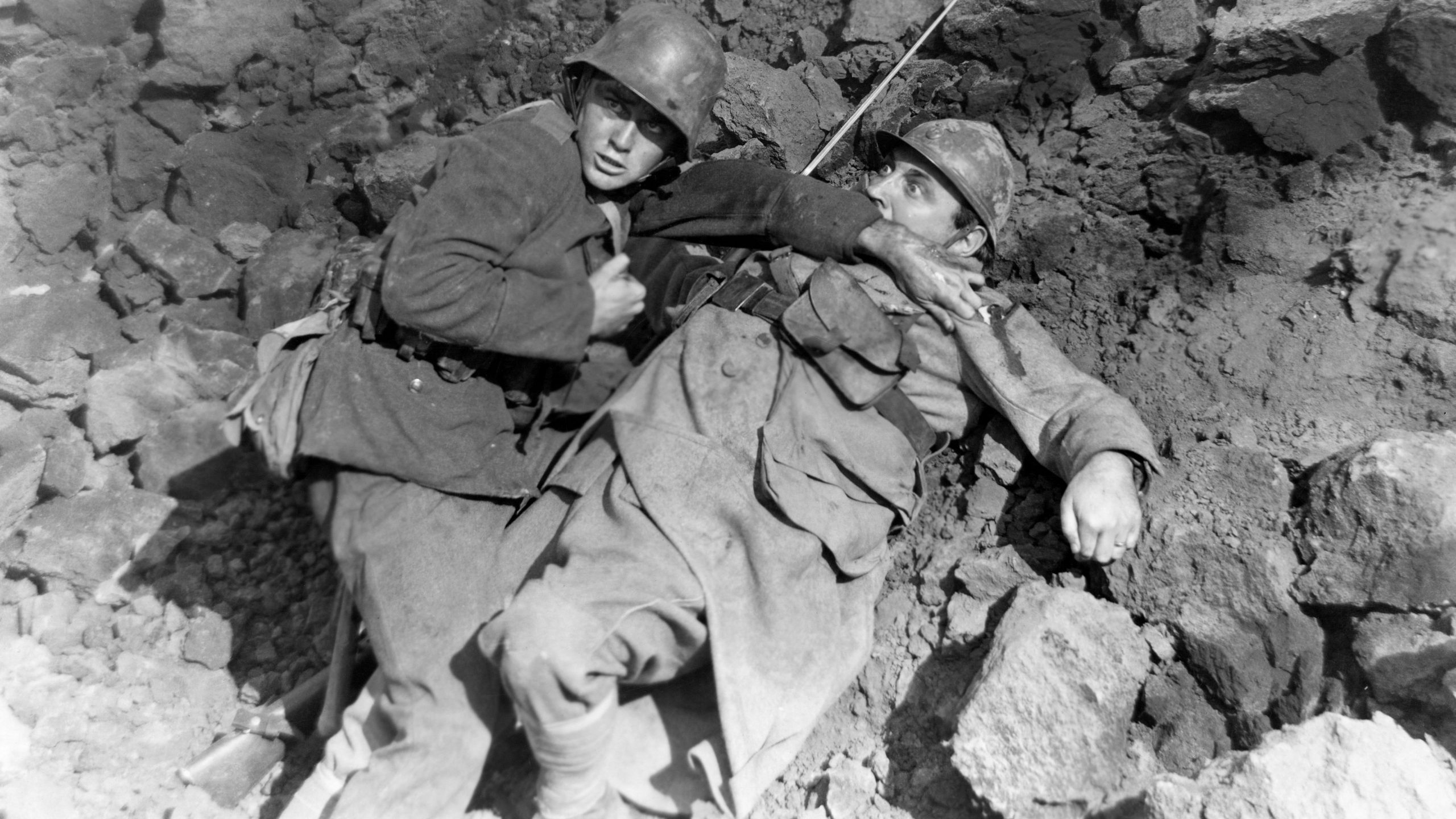
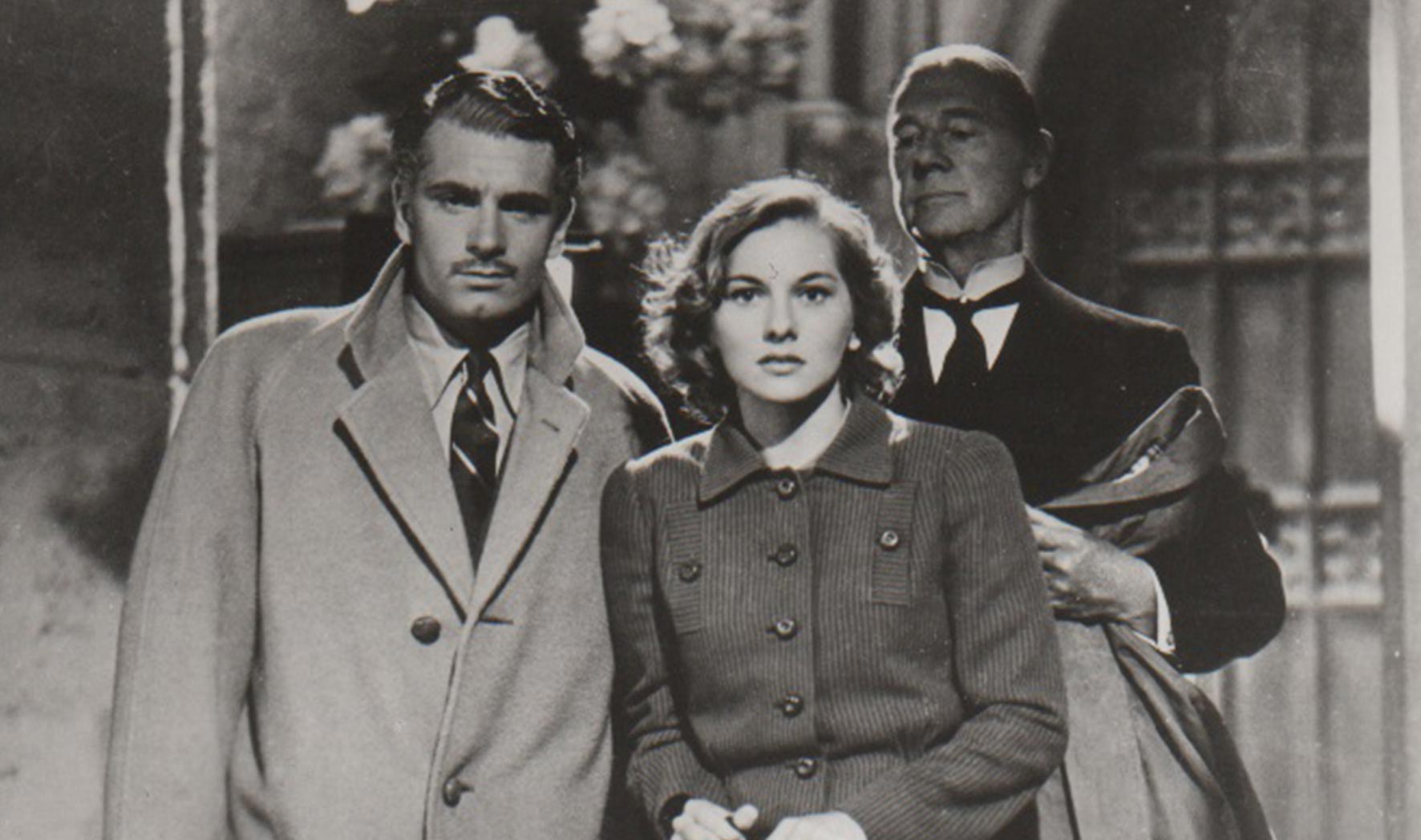
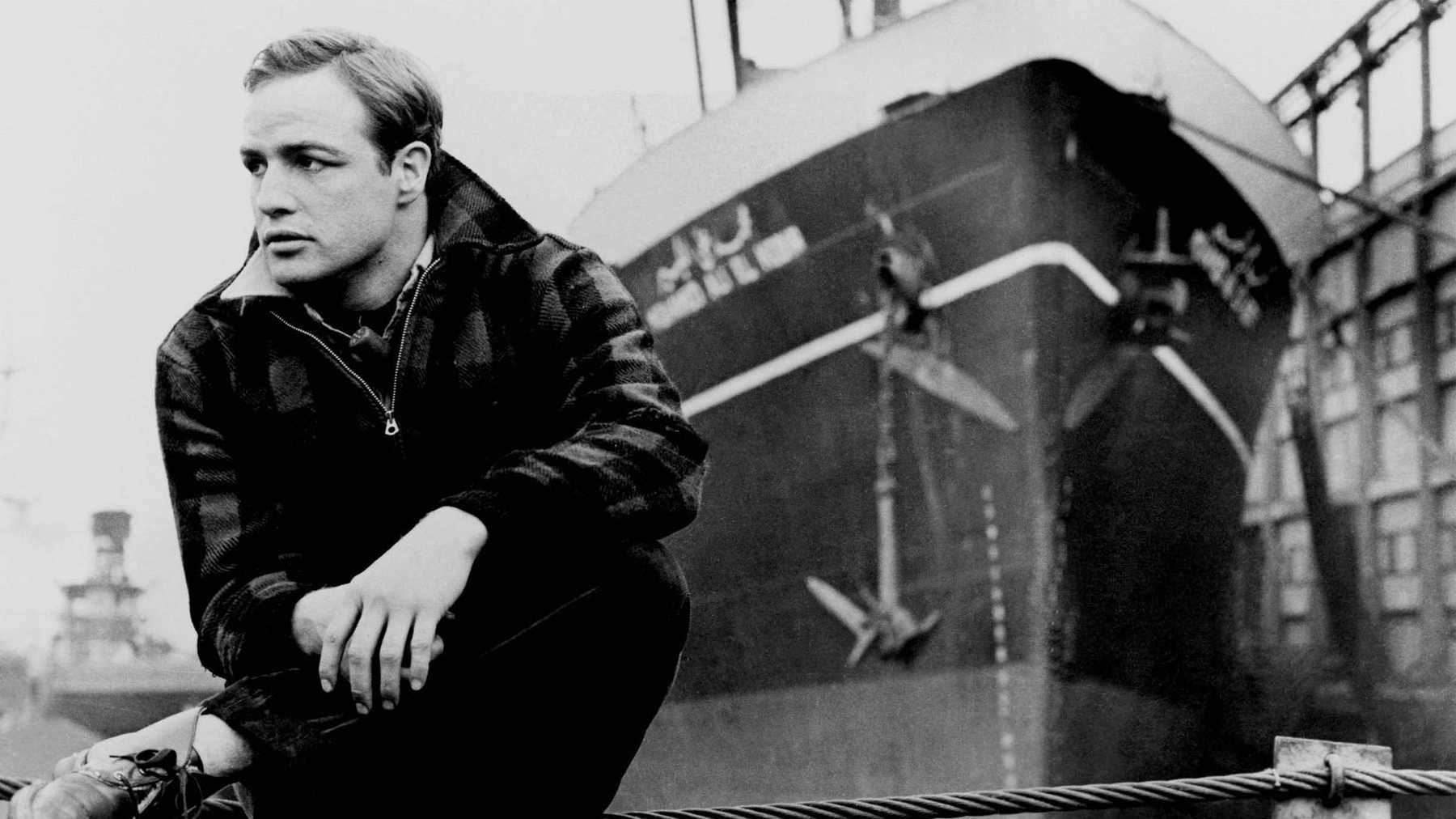
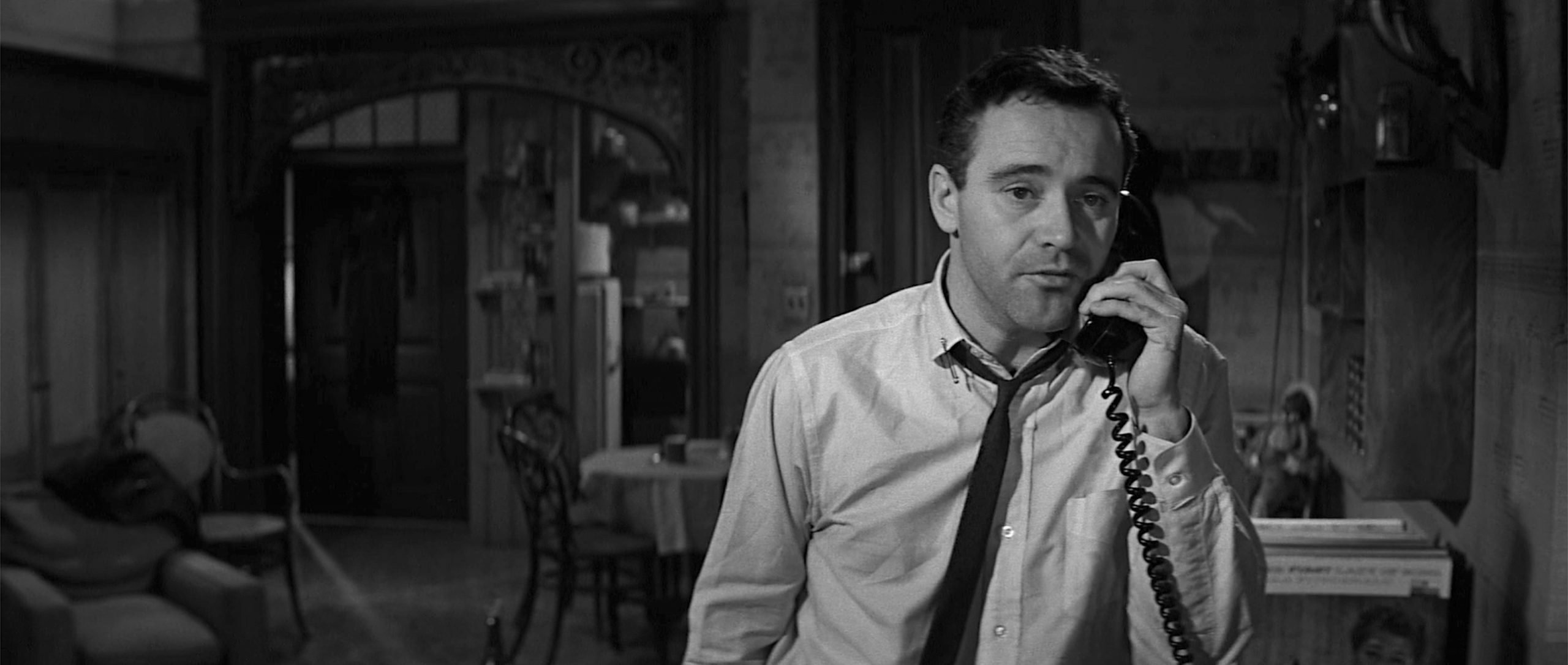
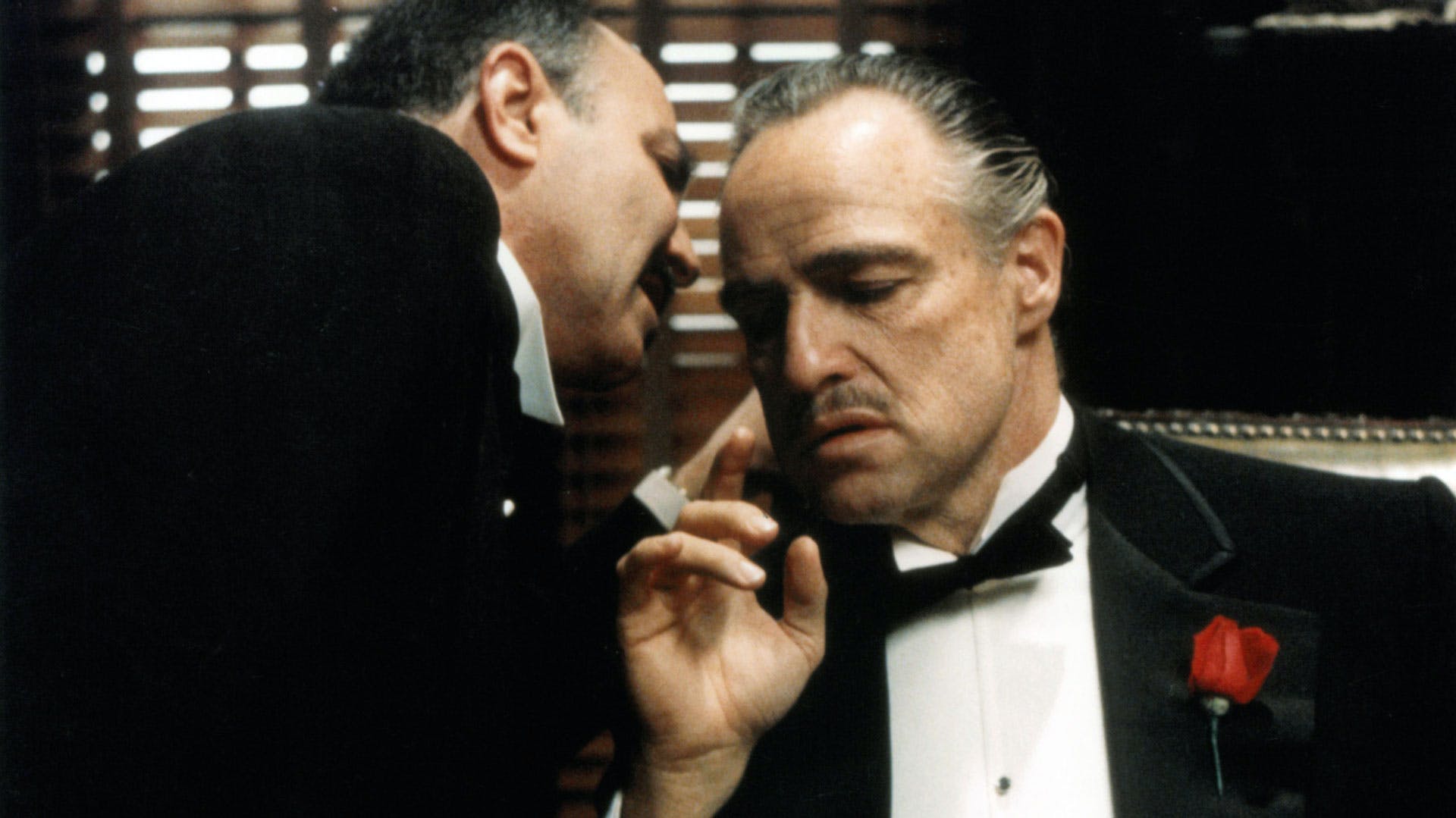
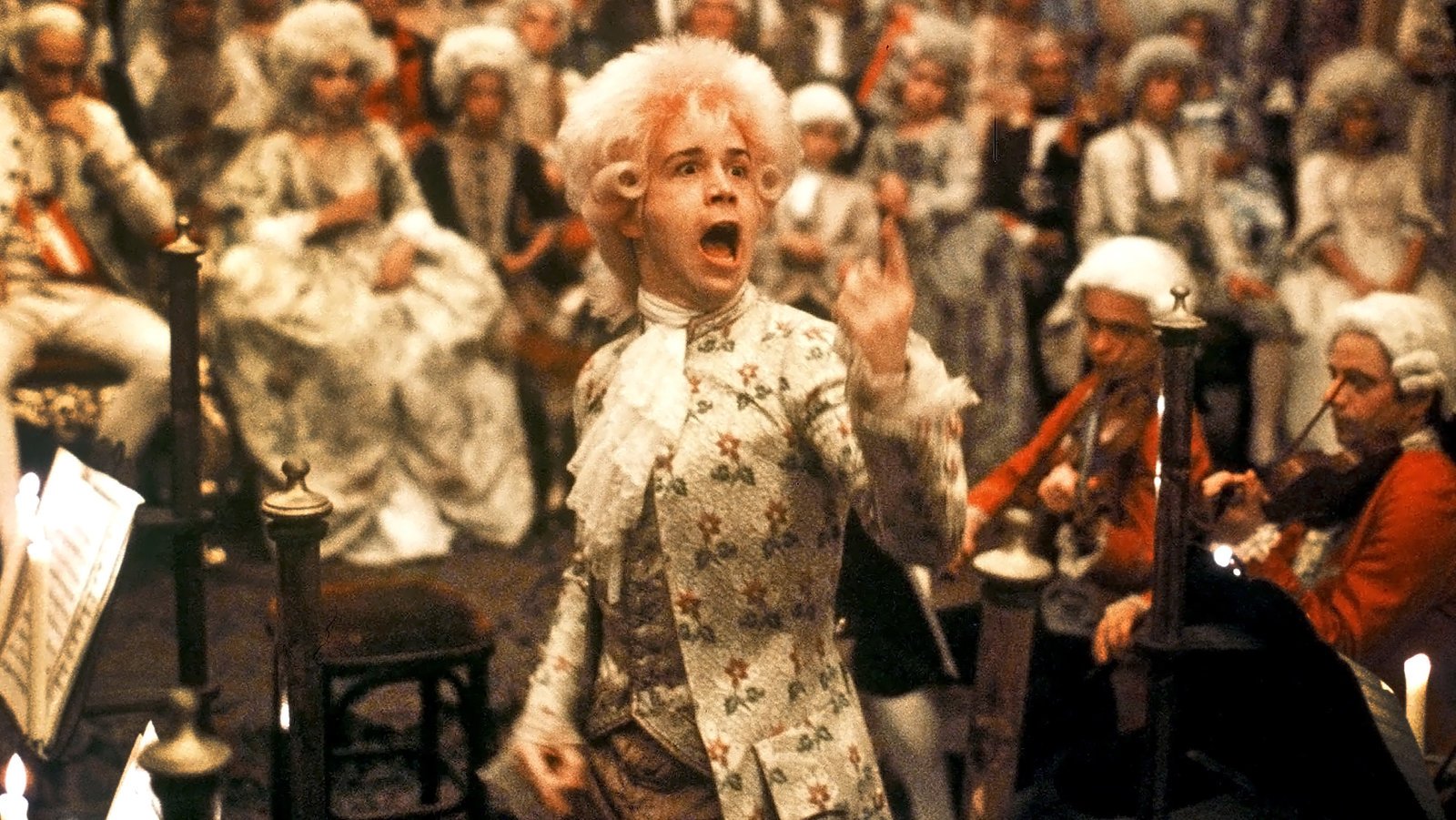
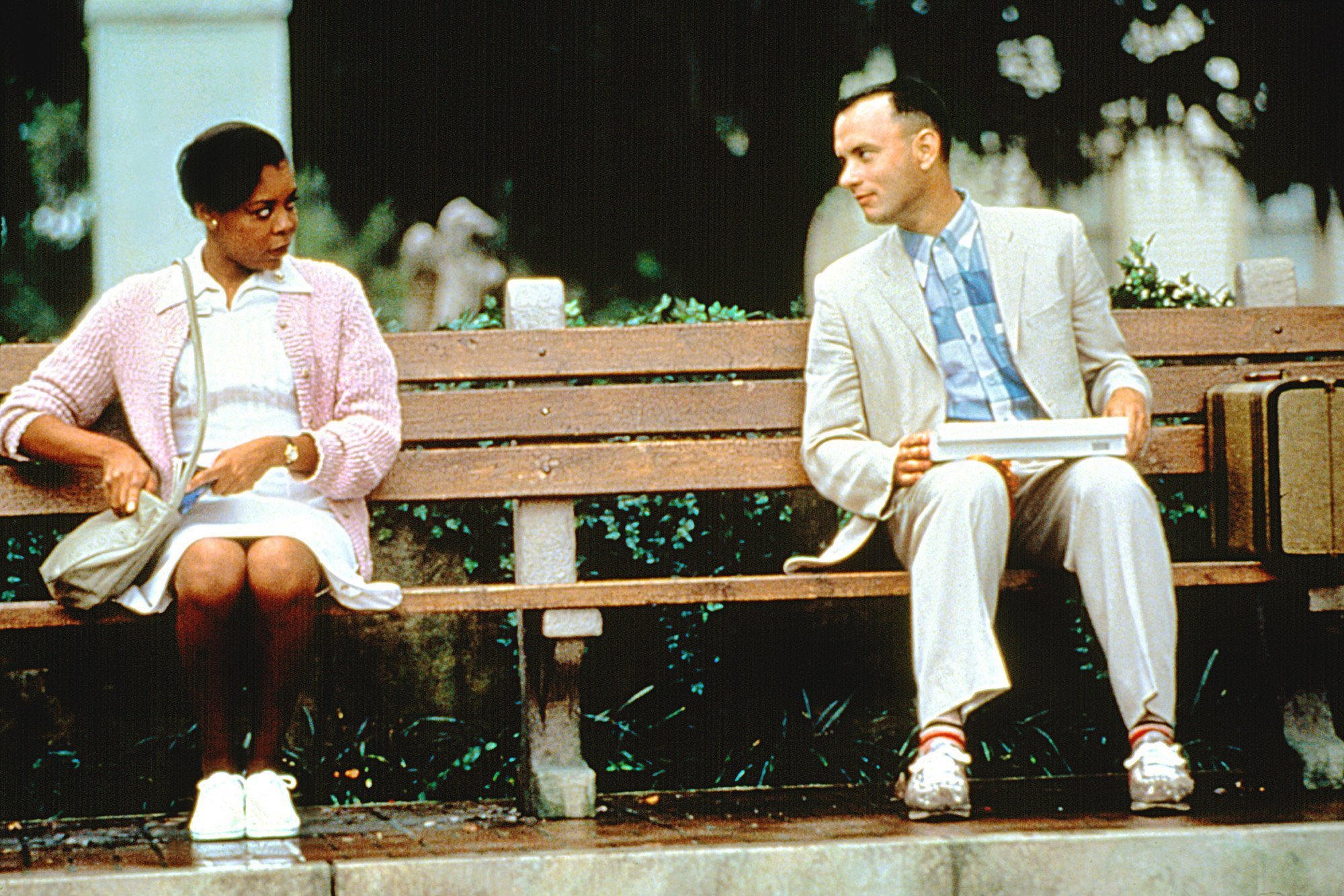
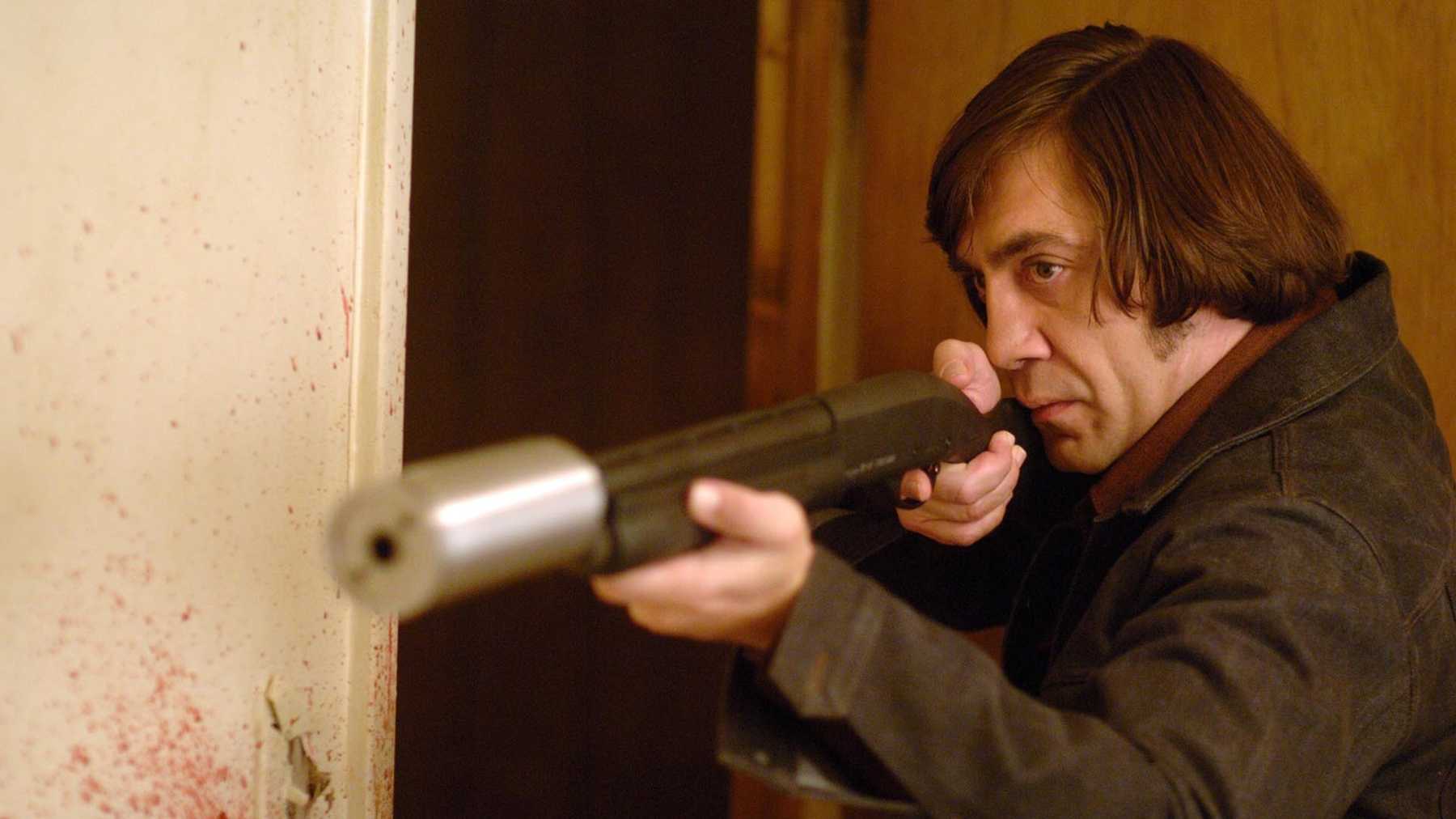


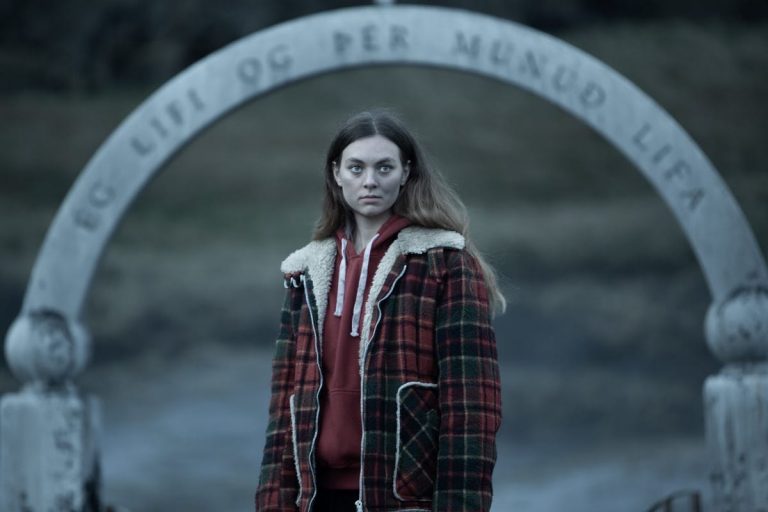
![Sertania [2020] ´CIFF´ Review – A Symbolic and Experimental Western](https://79468c92.delivery.rocketcdn.me/wp-content/uploads/2020/10/Sertania-1-higonfilms-768x269.jpg)
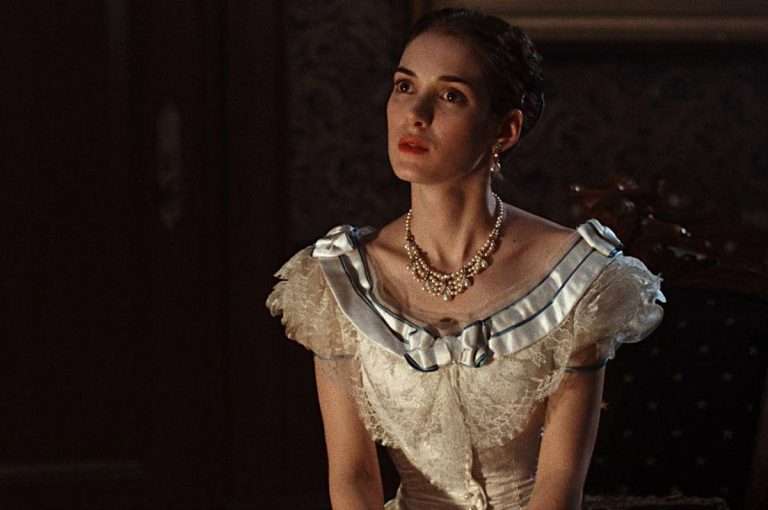
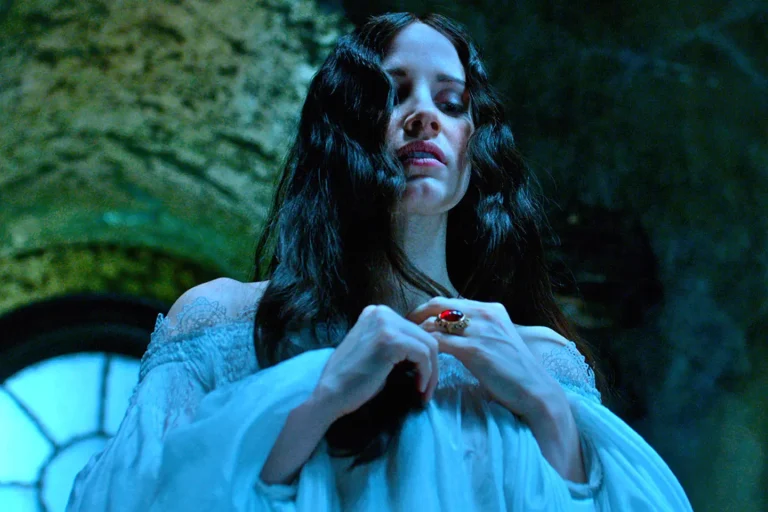
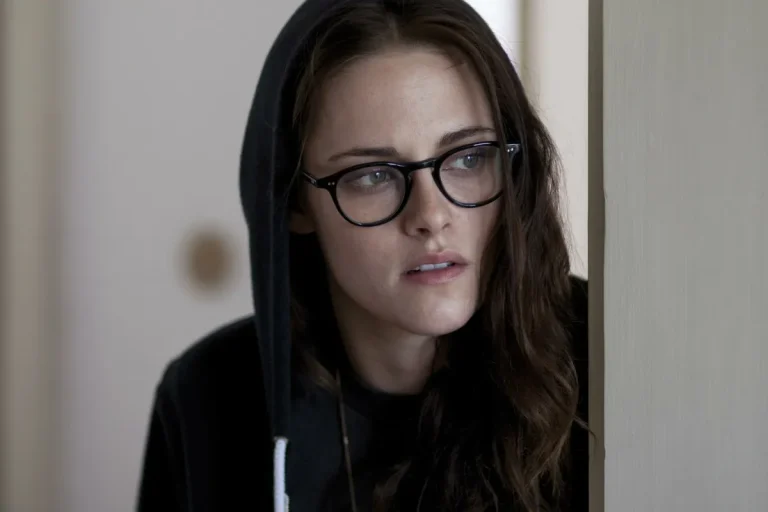
![The Employer and the Employee [2021]: ‘Cannes’ Review – A Modest, Bleak Portrait of Class Privilege and Indifference](https://79468c92.delivery.rocketcdn.me/wp-content/uploads/2021/07/The-Employer-and-the-Employee-768x402.jpg)